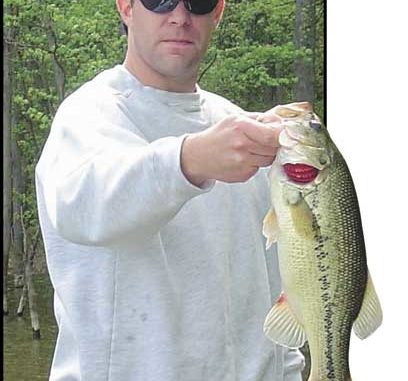
Is there ever too much? Too much time, too much money, “too much just ain’t enough,” as the song goes?
With fishing there can be too much, and that refers to casting lures. Can there be too many casts? You bet.
Have you ever been stuck in the back of the boat with someone fishing in front of you who casts every foot of the bank? No doubt I have (and I’ve dished it out too).
While I try not to be caught in the back of a bass boat with a partner who’s lashing the water in front of me, I’ve discovered several other interesting facts through my years of fishing pertaining to number of casts at a given area.
In general, the first cast to an area will generate a bite from an aggressive bass. However, if you miss the key spot, you’ll likely scare the bass and the fish won’t bite when you do hit the sweet spot.
So is casting every inch of the bank a good idea? Not usually.
If the water was really muddy and the fish aren’t skittish, then go ahead and fish every inch. If the water is clear and the fish are somewhat skittish, then fewer casts presented perfectly are more likely to land bass than many casts close together.
The first cast is when you first capture a bass’s attention, and when you’re most likely to get a response from a fish.
For example, if you’re casting at a flat, it’s best to space your casts far apart and alternate by casting from both sides of the boat. At first glance this might appear to be a haphazard approach, but it’s actually quite precise, as you’re trying to present a lure to a fish that wasn’t previously aware of the lure.
The first cast is no doubt the best chance to catch a fish, so you’re trying to make as many fish surprised about a feeding opportunity as you can.
For tournament fishermen, this is a little tricky when you have a partner because you have to be courteous. Great pro fishermen such as Kevin Van Dam and Rick Clunn have won tournaments knowing that the first cast is the most important.
Van Dam will have his trolling motor set at warp speed to space his casts far apart, presenting the bass with multiple opportunities for a fresh first chance at a meal.
If you’re fishing a bank with lay-down logs, it’s often best to cast only at the logs and not between them. Such an approach lessens the noise your lures make plopping into the water and don’t alert the bass to your presence before you get a chance to present your lure at the fish’s strike zone.
How often have you pulled up to a point at a lake and caught a bass with your first cast? The first cast at a point often yields a bass, but it’s often followed by nothing.
This situation usually occurs when fish are aggressive, yet sensitive to fishing pressure.
Sometimes the best strategy is to hop around to different spots at a lake and make just one or two casts at each likely target and move to another likely-looking spot. Although such a strategy usually will wear out an angler by the end of the day, he’ll likely catch many more bass.
The hop-and-cast technique also works well when bass are in small groups or wolfpacks.
When you catch a fish that was in a group, it’s competitiveness likely made it bite. Often the whole school follows a hooked-up bass to the boat, and then disperses once they detect the angler’s presence.
If you keep casting, you’ll generally just make them even more spooky, and it takes more time for the school to get back to the spot the fish were using as a feeding/ambush area.
The best option is to leave and come back every 30 minutes or hour to allow the school to regroup.
Less is also more for catching fish you can see in the shallows.
Lots of noise and movement only scare these fish. The best thing to do is allow the fish to discover a lure on its own terms.
Try to lead the fish by presenting a lure ahead of its swimming path. Let it settle and only slightly move the lure when the fish approaches.
I’ve caught bass using a tubebait where the bottom was so soft the bait actually went out of sight. When the bass approached, I’d lift the lure into view and it was all over — bass can’t stand that.
If you see a bass sitting still, it’s harder to tell where to cast. You have to make an absolutely perfect cast with no splash, and the best place to cast in the relation to the bass depends upon each fish’s mood.
I’ve been fishing at times when casting behind a bass was the only way to get it to bite. On the other hand, I’ve also witnessed incidents when casting behind a fish would make it swim as fast as it could to deep water.
Keep in mind these “less casts” scenarios the next time you go fishing, and you’ll find that less indeed can mean more strikes.
Dustin Wilks is a 30-year-old professional bass angler and Raleigh native now living in Rocky Mount. He has qualified for the Bassmaster Classic four times and operates Fish Like a Pro Fishing Lessons (252-883-6749, www.fishlikeapro.com ). His sponsors include Skeeter Boats, Yamaha, Daiwa, Keelshield and Culprit.



Be the first to comment